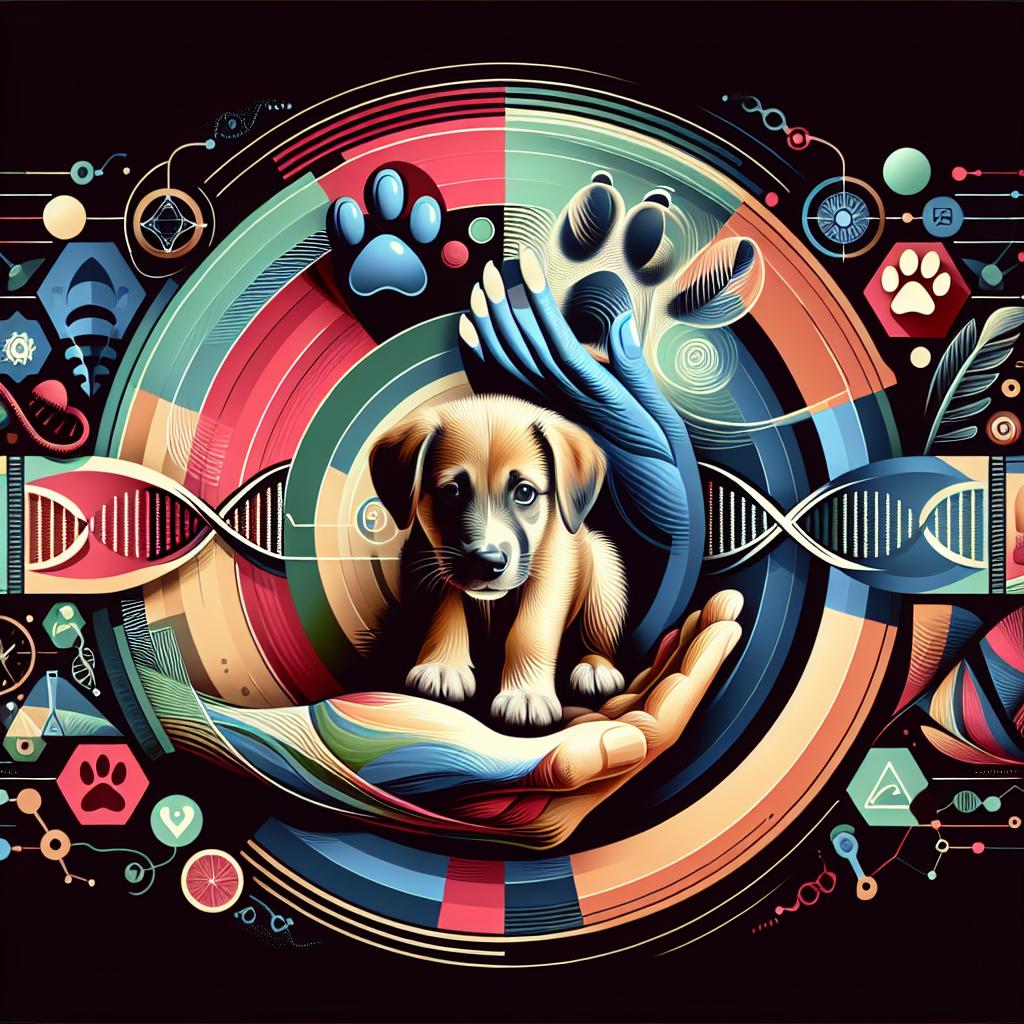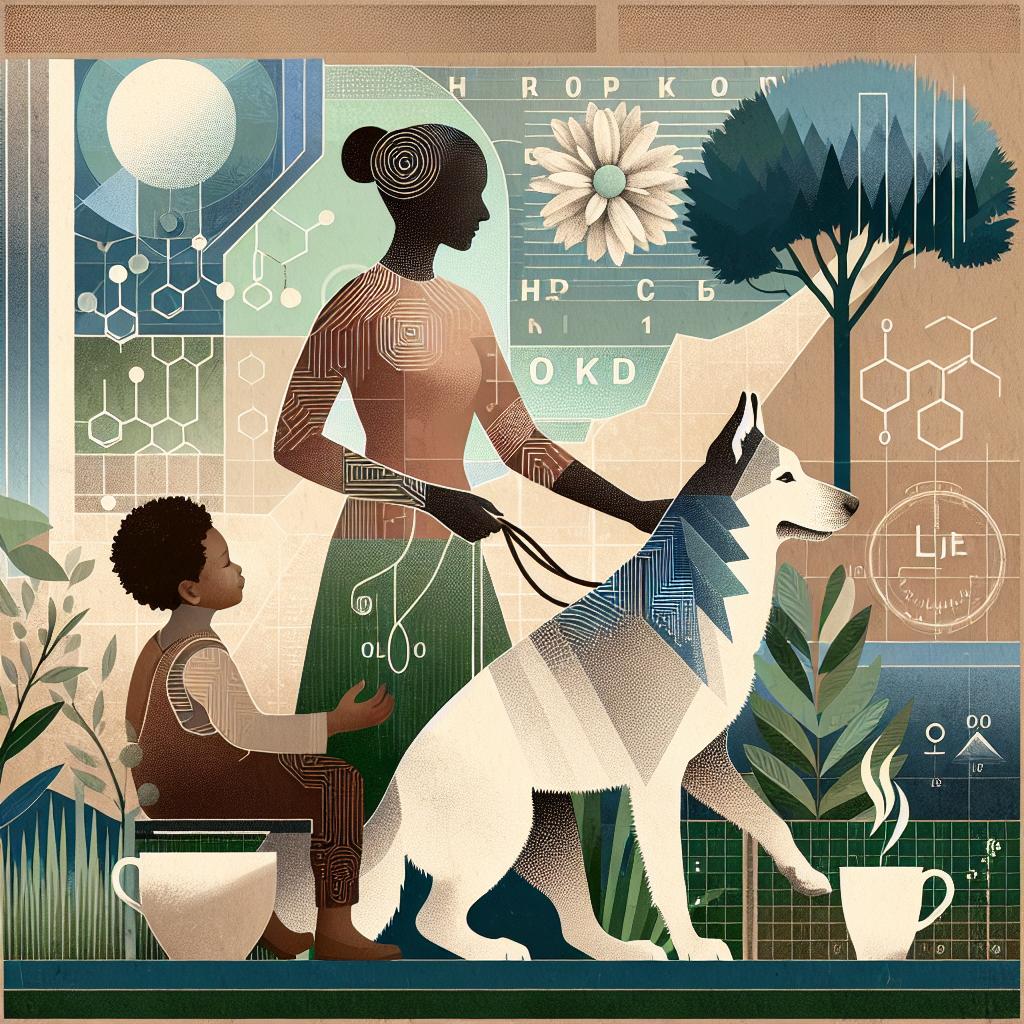Introduction
Every wag of the tail, every joyful bark, speaks volumes about our canine companions’ comfort and trust in us. As devoted pet owners, we strive to create an environment where our dogs feel safe and secure, but sometimes, our furry friends struggle with one essential aspect of their well-being: handling. Whether it’s a necessary trip to the veterinarian, a grooming session, or simply a friendly cuddle, many dogs experience anxiety or discomfort when being touched or held. In this article, we’ll explore effective strategies and techniques to train your dog to be comfortable with handling. By fostering a positive approach rooted in patience and understanding, you can help your pet embrace touch, creating a stronger bond and ensuring a happier, healthier life together. Join us as we delve into the art of making handling a stress-free experience for you and your beloved dog.
Understanding Your Dogs Body Language and Boundaries
Being attuned to your dog’s body language is essential for building trust and ensuring their comfort during handling. Dogs communicate primarily through their bodies, and understanding these signals can help you identify when they are relaxed or when they feel threatened or anxious. Look out for calm postures such as relaxed ears, a wagging tail, and a soft gaze, which indicate that your dog is at ease. In contrast, warning signs like growling, stiff body posture, and raised hackles suggest that your dog is uncomfortable and may need space. Learning these key indicators will empower you to respect your dog’s boundaries while training them to accept handling more comfortably.
To facilitate a positive experience for both you and your dog, consider the following tips for recognizing their limits and enhancing your training sessions:
- Start Slow: Begin with gentle touches and observe your dog’s reactions.
- Set Up Positive Associations: Use treats and praise to reward your dog for accepting touch.
- Respect Their Signals: If your dog shows signs of discomfort, take a step back.
- Gradual Approach: Slowly desensitize your dog to handling by reinforcing relaxed behavior.
Creating a comfortable environment is key. Here’s a simple table to help track your dog’s responses to different types of handling:
| Type of Handling | Dog’s Reaction | Next Steps |
|---|---|---|
| Pat on the back | Relaxed | Continue with praise |
| Holding the paws | Wiggling or pulling away | Give space and try again later |
| Brushing | Calm but alert | Gradually increase duration |
| Examining ears | Trying to move away | Stop and reward for staying still |
Building Trust Through Positive Reinforcement Techniques
Establishing a foundation of trust with your dog is crucial, especially when it comes to handling. One of the most effective ways to nurture this bond is through positive reinforcement techniques that reward desired behaviors. By focusing on the actions you want to encourage, your dog will associate handling with pleasant experiences. Consider employing these methods:
- Use Treats: Offer small, high-value treats immediately after your dog allows handling, whether it’s for a paw examination or a simple cuddle.
- Verbal Praise: Accompany your treats with enthusiastic verbal praise, helping your dog understand that they are doing something right.
- Gradual Exposure: Slowly increase the duration and intensity of handling, always rewarding good behavior to maintain a positive experience.
Additionally, consistency in your approach is paramount. Aim to create a safe environment where your dog feels comfortable and secure. Below is a simple guide to help you structure your training sessions:
| Session Duration | Activities | Rewards |
|---|---|---|
| 5-10 mins | Gentle Ear Examination | Cheese Cubes |
| 10-15 mins | Handling Paws | Soft Toys |
| 15-20 mins | Full Body Check | Favorite Treats |
By using methods that build trust through positive reinforcement, your dog will become more comfortable and relaxed during handling sessions, enriching your relationship and ensuring their well-being.

Gradual Exposure to Handling: A Step-by-Step Guide
To ease your dog into being comfortable with handling, it’s essential to take a gradual approach that allows your furry friend to build confidence at their own pace. Start with short sessions where you gently touch their paws, ears, and tail, while rewarding them with treats and praise. This will create a positive association with being handled. Aim to keep the interactions brief, gradually increasing the duration as your dog becomes more at ease with each touch. Pay attention to their body language; if they seem anxious, take a step back and approach more slowly.
Incorporate a variety of gentle handling exercises into your routine to further enhance their comfort level. Consider these techniques:
- Desensitization to different surfaces: Use soft mats, grass, or carpet to allow your dog to walk on while being handled.
- Creating positive experiences through play: Engage in fun activities that require gentle handling, like brushing or playing with their paws, rewarding them with treats afterwards.
- Using calming aids: Consider a calming vest or music designed for dogs to alleviate stress during handling sessions.

Establishing a Routine: Making Handling Comfortable and Familiar
Creating a routine around handling your dog can significantly enhance their comfort level and overall acceptance. Start by setting aside specific times during the day for handling practice, whether it’s grooming, checking ears, or inspecting paws. This predictability helps your dog associate these experiences with a positive and familiar routine. Here are some tips to incorporate into your daily life:
- Consistency is Key: Engage in handling sessions at the same times each day.
- Short and Sweet: Keep sessions brief to avoid overwhelming your pup, gradually increasing duration as they become more comfortable.
- Positive Reinforcement: Always reward your dog with treats or praise during and after handling sessions to create a positive association.
To monitor progress and identify patterns, you might consider keeping a simple log or chart. This can help both you and your dog recognize improvements and successes over time. You can utilize a visual representation to track your dog’s comfort levels, such as:
| Handling Activity | Comfort Level (1-5) | Notes |
|---|---|---|
| Grooming | 3 | Starting to relax with a brush. |
| Checking Teeth | 2 | Still hesitant; needs more treats. |
| Paw Handling | 4 | Loves the attention; very relaxed. |
By incorporating handling into your dog’s daily life through routine, you not only make the process more comfortable but also strengthen the bond you share. Mutual trust and familiarity flourish as your dog learns that handling is an expected and rewarding part of their day.
Q&A
Q&A: Training Your Dog to Be Comfortable with Handling
Q: Why is it important for my dog to be comfortable with handling?
A: Handling comfort is crucial for your dog’s well-being and safety. Regular handling – like touching their paws, ears, and mouth – is essential for vet visits, grooming, and overall socialization. A dog that is well-accustomed to being handled will be less stressed in various situations and more confident in their environment.
Q: What are some basic handling exercises I can start with at home?
A: You can begin with simple exercises such as gently stroking your dog while they’re relaxed. Gradually introduce handling their paws and ears, making sure to reward them with praise or treats for calm behavior. Start with short sessions and increase the duration as your dog becomes more comfortable.
Q: How can I make handling training a positive experience for my dog?
A: Positive reinforcement is key. Use treats, praise, and play to create a positive association with being handled. If your dog shows signs of discomfort, take a step back and go at their pace. Keeping the experience short and enjoyable will help your dog feel more secure.
Q: My dog gets anxious when I handle their paws. How should I proceed?
A: If your dog shows anxiety about paw handling, take it slow. Start by touching their leg without focusing on the paws, then gradually work towards holding a paw. Encourage a relaxed atmosphere with calm words and treats. If they seem overwhelmed, give them a break and try again later.
Q: Is there an ideal age to start training my dog for handling?
A: It’s best to start training as early as possible. Puppies are generally more adaptable and can learn to associate handling with positive experiences. However, older dogs can also learn new behaviors with patience and consistent training.
Q: What should I do if my dog reacts negatively to handling?
A: If your dog reacts negatively – such as growling, biting, or trying to escape – it’s essential to stop immediately and reassess the situation. Consider seeking the help of a professional dog trainer or behaviorist to develop a tailored approach that addresses your dog’s specific needs.
Q: How long does it typically take for a dog to become comfortable with handling?
A: The time it takes varies widely depending on the individual dog and their past experiences. Some dogs may become comfortable with handling in just a few sessions, while others might need weeks or even months of consistent, positive training. Patience is key!
Q: What other benefits come from training my dog to be comfortable with handling?
A: In addition to reducing anxiety during veterinary visits or grooming, a dog that is comfortable with handling is often easier to train, more social with people and other pets, and generally more adaptable in various environments. This training also strengthens the bond between you and your dog, leading to a more positive overall relationship.
Q: Are there any resources you recommend for further reading on this topic?
A: Absolutely! Numerous books and online resources are available. Look for reputable training guides that focus on positive reinforcement methods. Additionally, local training classes or workshops can provide hands-on experience and expert guidance. Always remember that every dog learns at their own pace, so take the time to enjoy the journey together!
The Way Forward
In wrapping up our exploration of training your dog to be comfortable with handling, it’s crucial to remember that patience and consistency are your best allies. Each pup is unique, and what works for one may not suit another. Embrace the journey, celebrate the small victories, and allow your dog to grow more confident in their interactions with you and others. As you diligently reinforce positive experiences, you’re not just fostering comfort; you’re building trust.
Ultimately, the time and effort you invest in this bonding process will pay dividends not just in your dog’s behavior, but in the strength of the relationship you share. Handling can pave the way for pleasant vet visits, enjoyable grooming sessions, and stress-free outings. So, take a deep breath, keep the treats handy, and remember that every moment spent training is a step toward a happier, more secure canine companion by your side. Happy training!

